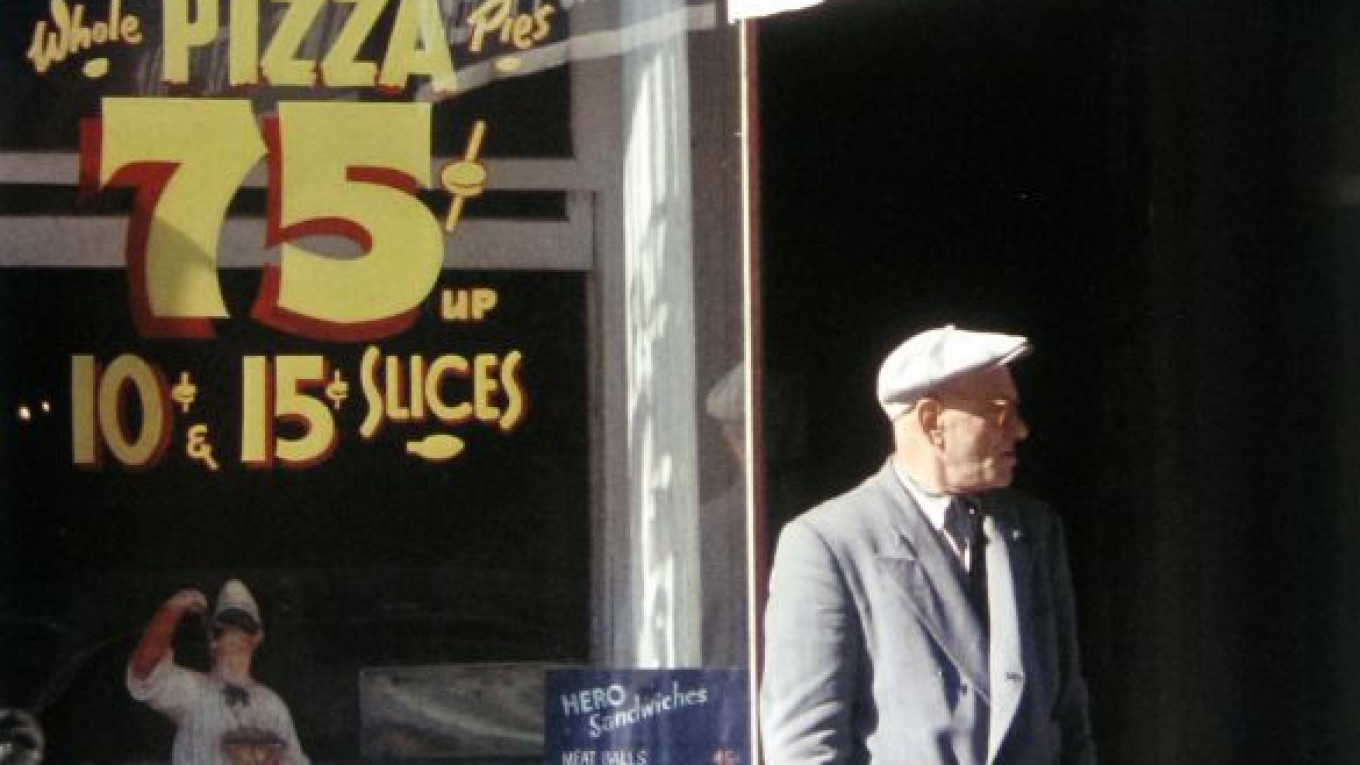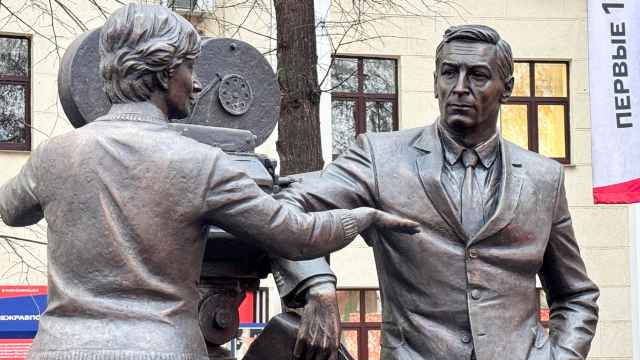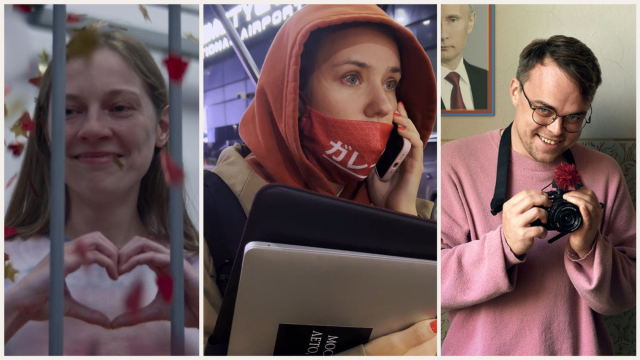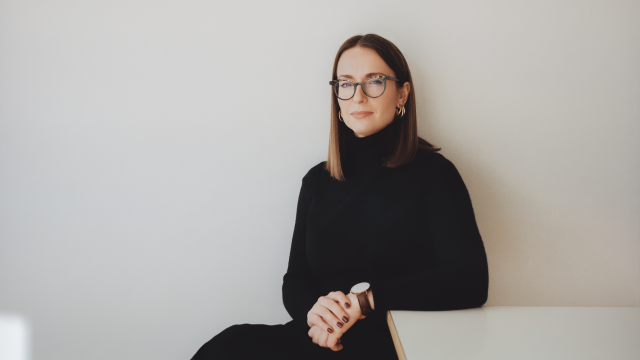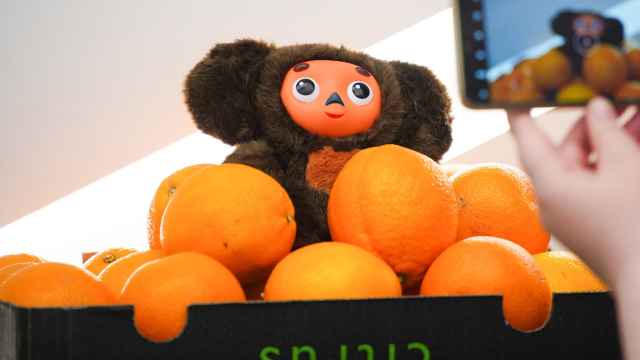Saul Leiter’s color photos are at first sight understated, like the man himself. His fame as a photographer lingered in obscurity for decades before regaining fame in the 1990s.
Despite being set in the hustle and bustle of 1950s and ’60s Manhattan, Leiter’s photos exude a surprising peace, snatched by Leiter from the unceasing movement of the city, and emphasized by his celebrated use of color.
His “Early Color” collection now being shown in the Winzavod Center for Contemporary Art offers the perfect antidote to a megapolis’s excesses, a reminder of the more relaxed and beautiful moments of urban life.
The photographs use a beautiful combination of colors, and we see fragments of everyday activity, somehow special when seen through Leiter’s lens. One memorable example just shows a man, cigarette in mouth, walking on a Manhattan street, a car in the background and an array of signs all around.
“It’s quite possible that my work represents a search for beauty in the most prosaic and ordinary places,” Leiter said in a 2009 interview with Dean Brierly for the Photographers Speak web site. “One doesn’t have to be in some faraway dreamland in order to find beauty.”
Some of his photos resemble montages as the different layers in the pictures bring out different colors and focuses. One photo from a rainy street shows a women’s face drifting into view through the misted glass of the restaurant window.
Natalya Oleshchuk, head of the prints collection department, said, is “always on the hunt for color.” A number of his photos utilize blurred colors to appear like paintings.
Leiter was born in 1923 to a Jewish family in Pittsburgh. His father was a rabbi who wanted his sons to follow in his footsteps, and Leiter did initially study to become a rabbi. His father was deeply ashamed when he became a photographer and cried the second time Leiter’s work was shown in an exhibition.
“My mother thought I could be a rabbi and still paint on the third floor. ‘Who would know?’ she would say. My father thought photography was done by lowlifes,” Leiter said in the 2009 interview.
Leiter became more interested in photography once he had left home, when his artist friend Richard Poussette-Dart encouraged him to try photography to make a living. Before becoming a photographer, Leiter was also a painter.
He was associated with the New York School of photography, which redefined street photography between the late 1930s and early ’60s.
Leiter has said he did not feel part of the New York School. “I did at one point have a collection of books put out by an Italian publishing house of stills from a number of famous early movies. I think these books may have had a certain amount of influence on my photographs.” Many of his friends at the time were painters, rather than photographers, and his love for painting certainly seems to come across in some of his photos.
This is the first time Leiter’s work has been displayed in Russia. “His work fits perfectly our philosophy of combining photojournalistic and artistic photography,” Oleshchuk said. The idea to bring his work to Moscow came when the gallery’s director saw Leiter in the Howard Greenberg Gallery in New York.
“Early Color” runs till Feb. 13. Winzavod Center for Contemporary Art. 1 4th Syromyatnichesky Pereulok, Bldg. 6. Metro Chkalovskaya, Kurskaya. Tel. 228-1170, http://gallery.photographer.ru/exhibitions.
A Message from The Moscow Times:
Dear readers,
We are facing unprecedented challenges. Russia's Prosecutor General's Office has designated The Moscow Times as an "undesirable" organization, criminalizing our work and putting our staff at risk of prosecution. This follows our earlier unjust labeling as a "foreign agent."
These actions are direct attempts to silence independent journalism in Russia. The authorities claim our work "discredits the decisions of the Russian leadership." We see things differently: we strive to provide accurate, unbiased reporting on Russia.
We, the journalists of The Moscow Times, refuse to be silenced. But to continue our work, we need your help.
Your support, no matter how small, makes a world of difference. If you can, please support us monthly starting from just $2. It's quick to set up, and every contribution makes a significant impact.
By supporting The Moscow Times, you're defending open, independent journalism in the face of repression. Thank you for standing with us.
Remind me later.


